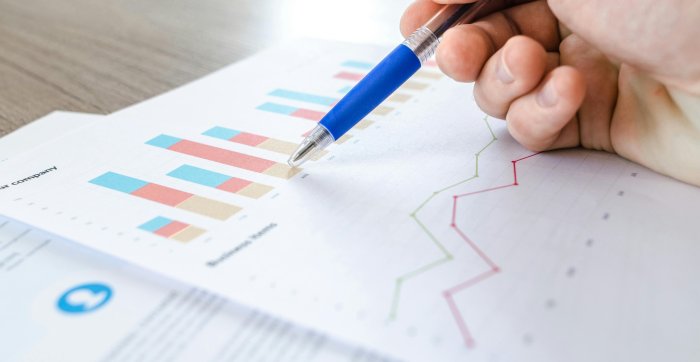
Although 30 June is still a few months away, it is a good time to ensure that you are paying attention to the substantiation requirements for claiming work-related expenses as a tax deduction.
If you can get a good system in place that catches the necessary information, it makes it so much easier at tax time to have your tax return completed. Also, you are much more likely to get back a nice refund!
If you can’t substantiate your expenses, broadly, you are not allowed to claim a tax deduction for them.
Work-related expenses are expenses incurred by employees in the course of performing their job duties. Technically, the expenses must be incurred in deriving the assessable income of the employee. These expenses must not be of a private or domestic nature.
Common examples of work-related expenses
Travel expenses: This includes costs associated with work-related travel, such as accommodation, meals, and transportation.
Uniforms and protective clothing: Expenses for purchasing, repairing, or cleaning uniforms or protective clothing required for work.
Home office expenses: Costs incurred for running a home office, including utilities, internet, and office supplies. You may also need to keep records that enable proper apportionment of expenses between work and non-work use.
If you use the “revised fixed-rate” (67 cents per hour) method of claiming home office expenses, you must keep very good records of how much time you spend working at home. An estimate of the hours (even a reasonable estimate) is not sufficient.
Work-related education: Expenses for courses, seminars, or training programs directly related to an employee’s current role or career advancement.
Tools and equipment: Costs of purchasing or repairing tools, equipment, or electronic devices required for work.
Substantiation rules
The substantiation rules in the tax law, broadly, depend on what is being claimed and whether it is reasonable to be able to obtain the substantiation.
With regard to motor vehicle expenses, the person making the claim must use either the cents per km method or the log-book method. If the cents per km method is chosen, a maximum of 5,000 business kms may be claimed at the applicable rate (this rate is 85 cents per km for the financial year ending 30 June 2024). The number of kms claimed is by “making a reasonable estimate”.
The log book method requires much more work. To use the log book method you must “hold” the car. This means that you must own the car or have it leased to you. The tax deduction is claimed by multiplying the percentage of business use by the costs related to operating the vehicle.
The percentage of business use is worked out from the log book. The log book must be kept detailing each car journey over a continuous period of at least 12 weeks. The 12 week period can straddle two income years. Each entry must be in English. If you haven’t kept a log book for 4 income years in a row, you must keep one for the next income year.
Learn more: Tax deductions for car expenses
In relation to work expenses (broadly), if the total of these expenses is $300 or less, you can deduct them without getting written evidence or keeping travel records. If the expenses are above $300, every item must be substantiated.
If you have a small total of small expenses, you can make a record of the expenses instead of getting a document from a supplier. Each expense must be $10 or less and the total of these expenses must be $200 or less.
In a recent tax case, a real estate salesman tried to substantiate his expenses using bank statements and credit card statements. The Administrative Appeals Tribunal did not accept this method as valid substantiation. The reason for this was that the statements did not contain the detail required by the tax law.
So, the best policy is to obtain a receipt or invoice from the supplier of the goods or services. This should be kept in a file in your records. Alternatively, you might like to try using the ATO app which can keep a track of your deductions. Search for “ATO app” on ato.gov.au.
Contact KMT accountants now for advice or assistance with your tax planning.
About our advisers:
Chrisanthe Lekatis is renowned for her expertise in management accounting, virtual CFO services, and top-tier business advice. She empowers management with tailored strategies for success, streamlining processes to achieve efficient and cost-effective outcomes. Her commitment to building trust and lasting relationships goes beyond professional excellence; it’s a personal ethos. By actively listening and understanding her clients’ businesses and goals, Chrisanthe thrives on collaborative efforts to navigate challenges and collectively achieve their aspirations. Please do not hesitate to reach out if you need assistance.
Michael Fox has been dedicated to the success of his clients, devising comprehensive wealth strategies for both personal and business growth for over 4 decades. With extensive expertise in business governance and family business succession, Michael specialises in empowering emerging businesses and family enterprises by fostering renewal, enhancing value and smooth transitions to the next generation. Please do not hesitate to reach out if you need assistance with your business valuation.
FAQs
How does the ATO verify and monitor work-related tax deductions?
The search results suggest that the ATO closely scrutinises the tax deductions claimed by individual taxpayers. They compare your deductions against benchmarks for your occupation, location, industry, and age group. If your deductions seem too high or out of place, the ATO may investigate further.
What are some common mistakes people make when claiming work-related tax deductions?
According to the search results, some common mistakes include:
- Guessing or estimating deduction amounts instead of using actual receipts.
- Failing to declare overseas income and work-related expenses.
- Claiming deductions without having the necessary receipts or proof of purchase.
The search results advise keeping good records, using genuine amounts from receipts, and consulting a tax agent to ensure you claim the correct deductions.
This is general advice only and does not take into account your financial circumstances, needs and objectives. Before making any decision based on this document, you should assess your own circumstances or seek tax advice from a qualified accountant at KMT Partners. Information is current at the date of issue and may change.


